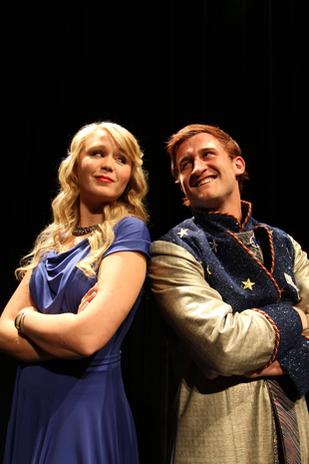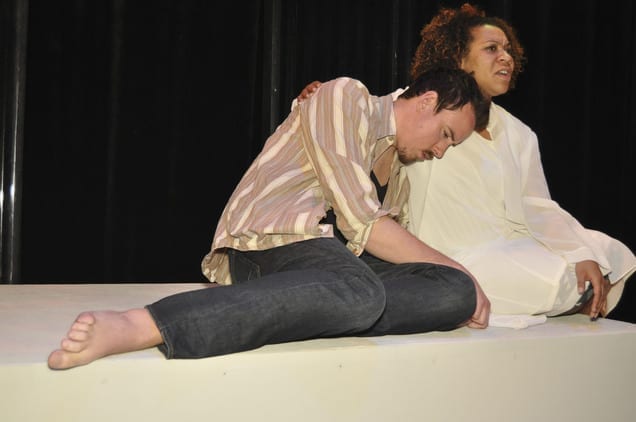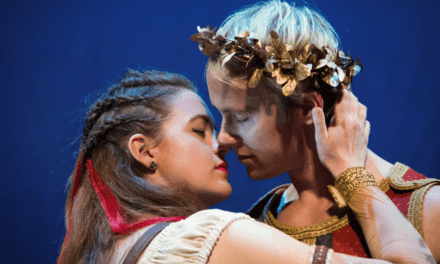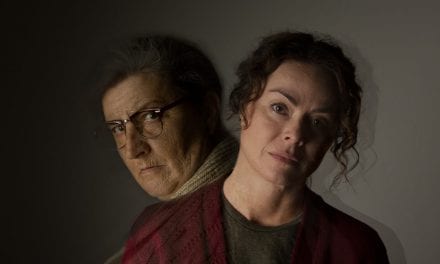CENTERVILLE — In Utah, it’s obvious that Joseph and the Technicolor Dreamcoat (music by Andrew Lloyd Webber, lyrics by Tim Rice) is an audience favorite. Multiple productions of Joseph crop up every year, and amazingly, most productions of the show are well-attended or even sell out. I myself have seen the musical on stage at least six times, and my family so loved the show that growing up, the CD was playing regularly.
Why is this show so popular—particularly with the Utah set—and how does it keep drawing in the crowds? This was the question that Director Alane Schultz addressed in her director’s notes in the program. Schultz’s answer in a nut-shell is a five-part meld: first, Lloyd Webber’s genre-hopping musical genius; second, a Biblical storyline bringing familiarity and feel-good morals; third, the large cast of children in the show (always an adorable addition); fourth, the uniqueness of each production of the musical; and fifth, Utah-native Donny Osmond’s connection as “the quintessential Joseph.”
While I’m not sure how much pull Donny really has on bringing in the crowds to see shows he’s not even in, I agree with Schultz’s assessment overall. Joseph is a favorite because it is a well-rounded, fun, relateable piece. It is also a production that is pretty difficult to badly screw up thanks to its schizophrenic journey of musical genres and the text’s leniency to be able to be treated with even extreme parody.
What made CenterPoint Legacy Theater’s current production of Joseph exciting is the choices Schultz made to set this show apart. In a brilliant move, Schultz utilized the children’s chorus—who in typical productions of Joseph are in the show for fleeting, brief moments of storytelling— to become the extras and even fill some minor roles. Children play sheep in the fields of Canaan, the “harry Ishmaelites” Joseph is sold to, guards for Pharaoh, even the Baker (played by Daniel King) and Butler (played by Taylor Sachs).
Another distinction of this production was the dramatic opening. The show begins with a child’s scream. Nervously excited children then emerge throughout the darkened theater with flashlights, all eventually reaching the stage where actors stand as statues of things to come. One of the statues, the narrator, comes to life. An enormous, glowing book—presumably a Bible since that’s the source of the story—is presented and becomes a kickstand for the overarching theme that this entire show is a storybook, come to life.
If this show’s innovations stopped right there it would still be notable and worth attending. But happily, this show reaches another level in well-executed details. The gorgeous set designed by Eric Ohliphant featured rounded, backlit platforms painted with Egyptian-styled hieroglyphics and large trees on the outskirts of the stage. In reality, the stage was fairly simple in its layout and design—but the richness of quality and color in its construction made it stand out, as did its perfect marriage with the lighting design by Glenn Linder. The lighting enhanced and complimented the set, particularly in such numbers as the ever-colorful “Joseph’s Coat” and the upbeat, disco-esque “Go Go Go Joseph Reprise,” both of which showcased bright, color-changing lighting.
Speaking of colors—enough cannot be said of the rainbow of hues and styles showcased by the costumes masterfully designed by Lisa Ohliphant. Every scene brought a new array of costumes, particularly for the brothers and the wives. The costumes also changed style appropriately with the music; for instance, during the drawling country tune of “One More Angel In Heaven,” the wives wore full country skirts which, when lifted, revealed a full rainbow of colors in each skirt’s hems. Later, in the Potiphar scenes, the men all donned 1930’s mob-inspired pinstriped suits while Potiphar’s Wife—playfully played by Cami Crawley—wore a knockout blue gown reminiscent of a popular lounge singer.
In contrast to the constantly changing costumes of the adults, the children remained in their everyday clothes, with costume pieces added to them as needed. I loved this costuming decision, as it suggested that though children were playing along and fully immersed in this storybook, they were still just children.
Musically, this production succeeded. The ensemble of the show sang with nice tone, volume, and diction—and their sound was well-adjusted to each song’s genre (kudos to music director Megan Cash). And the dancing—particularly in “Joseph’s Coat,” “Go Go Go Joseph,” “Song of the King,” “Those Canaan Days,” and “Benjamin Calypso”—was entertaining, well-performed, and choreographed cleverly by Kristi Shaw. My favorite choreography was the tango during “Those Canaan Days,” which involved a passionate fight over an apple. It was both hilarious and fitting.
Chandler Newsome played the title role of Joseph well. I’ll admit—at first I wasn’t too wowed by Newsome as his singing voice. Though it was overall pleasant, at moments he sometimes seemed to be searching for the correct pitch. But as the show progressed, he won me over with his charisma and boy-next-door good looks and charm. His portrayal opened me up to the overwhelming charisma of the character of Joseph—that go-getter, friendly, likeable energy that helped Joseph earn trust from superiors (as well as jealous hatred from his brothers). “Any Dream Will Do” was easily Newsome’s best singing moment, with “Close Every Door” as second mainly because the beginning of the song felt emotionally forced, but balanced out as it progressed. An unexpected surprised was that Newsome is also an exceptional dancer, to the point that he stole the spotlight during any dance sequences he was in, including “Go Go Go Joseph Reprise.”
The Narrator, played by Nicole Burton, is a coveted female role as the character is on stage and singing for almost the entire show. Burton was radiant and confident as the narrator and impressively slipped into the “style” of each scene—from playing the Western bar maid in “One More Angel in Heaven” to swooning over Pharaoh with all the other ladies in the Pharaoh scenes. Burton’s voice was crisp, clear, sweet, and perfect for the narrative singing constantly required in the show. However, in the few moments when the music allows Burton to belt out and shine—for example, during “Pharaoh Story”—she seemed to be holding back and didn’t deliver the “wow factor” those moments require.
Another notable performance was Jordan C. Johnson’s portrayal of Pharaoh. Often, this role becomes a caricature of Elvis Presley and is ridiculous and over-the-top in an entertaining way. Johnson’s Pharaoh, however, was delightfully real and easy going, a believable leader tinged to be like Elvis. Instead of doing a constant Elvis impression, Johnson played a Pharaoh that stood on his own as a character, but was suggestive of Elvis overall in a subtle, yet recognizable way.
Overall, CPT’s production of Joseph is a fresh take on an old favorite. It is a well-executed classic in direction, design, artistry, and performance and is worth checking out.







